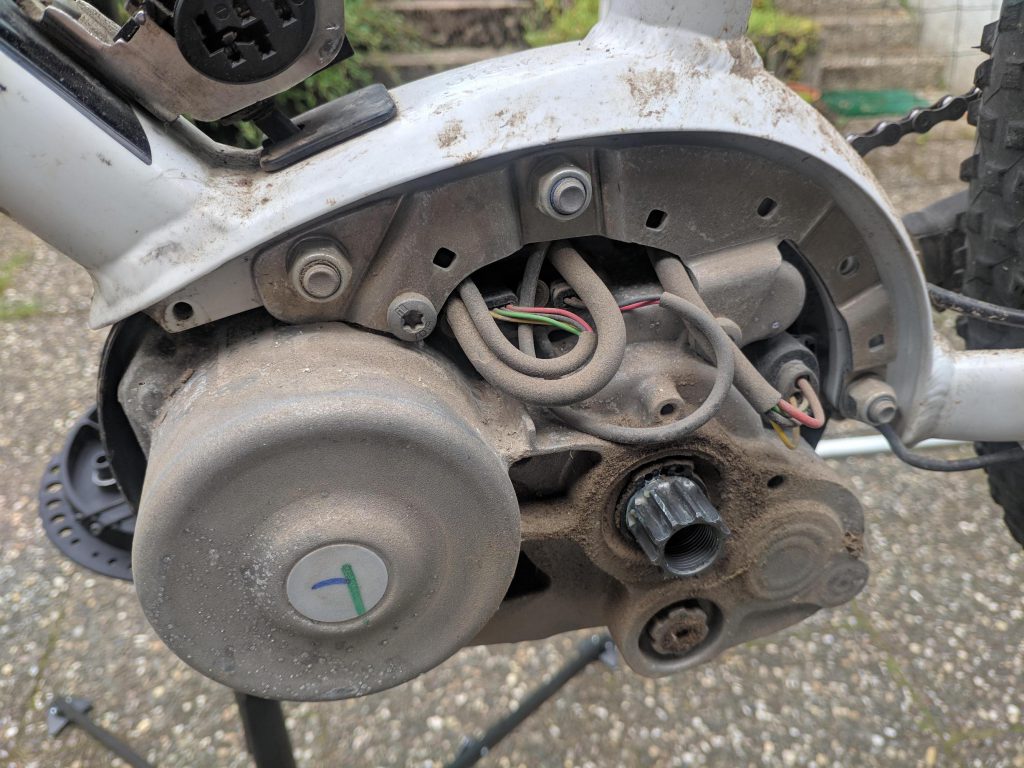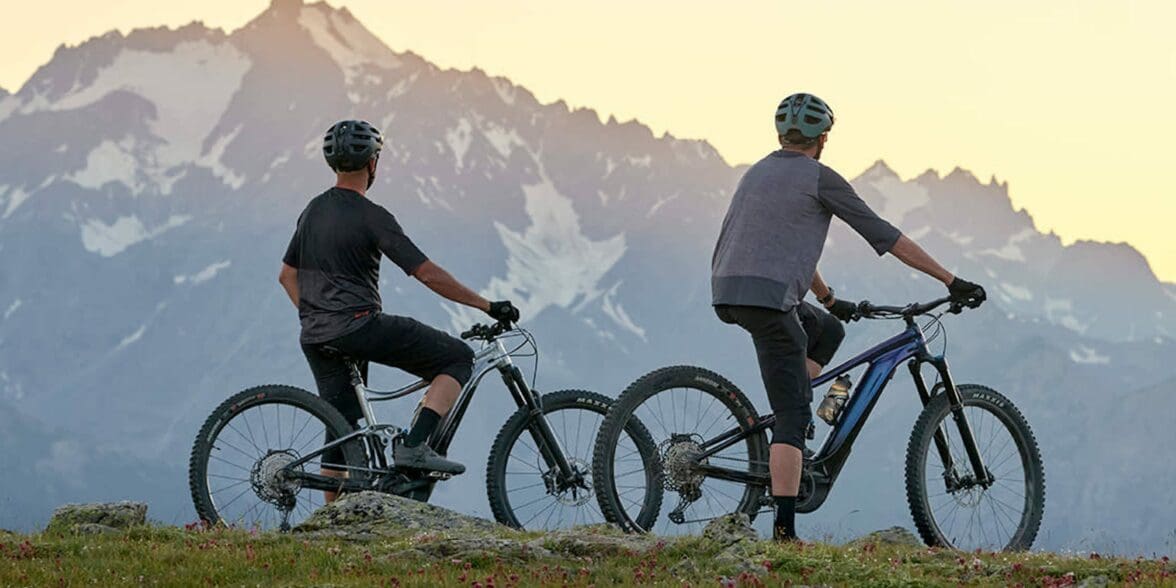An Overview of Hub-Drive and Mid-Drive eBikes
In this article, we aim to cover everything you need to know about using a hub or mid-drive motor for your electric bike. Alright, so first things first; what’s the difference between the two? Well, a hub drive is an electric bike motor right in the middle of the hub or wheel, typically in the rear wheel. The motor receives some power from the controller, causing the motor to start turning, extending to the spokes and tires to eventually propel the entire bike.
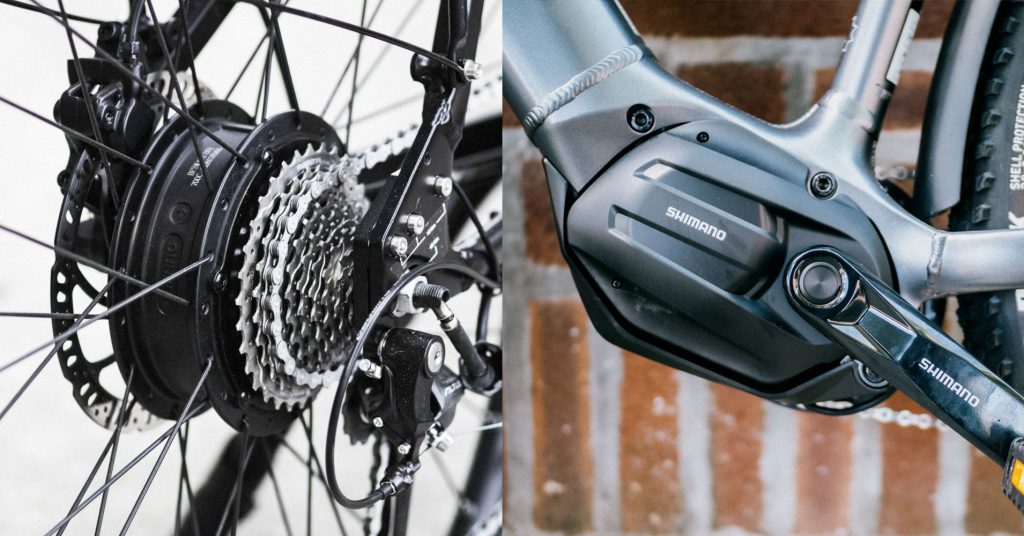
On the other hand, a mid-drive is an electric bike motor located right in the middle, as opposed to on the back or front of the bike. Typically, these mid-drive motors are situated between the pedals and attached to the drivetrain. They’re mostly made up of a traditional chain, cassette, and chainrings, which drive the rear wheel to generate momentum.
One benefit of a mid-drive motor shows itself mostly on long journeys and tackling inclines. The synergistic combination of the bike’s gears and mid-motor allow it to operate more efficiently and offer longer mileage per charge. We’ll discuss which one is better to use and why shortly. But let’s just focus on one type for now, starting with the pros and cons of using a hub-drive motor.
Hub-Drive eBike Pros
Firstly, hub drives have remained affordable for quite a few years now. From a manufacturing standpoint, they can easily be attached to a variety of different frames with just a few minor adjustments. Therefore, designers have much more freedom to work on the rest of the eBike. Due to their lengthy presence on the market, riders have a lot of options available to choose from, including low and high power motors, wheel sizes, and so on. As such, they make a great option for anyone wishing to convert their regular bicycle into an eBike.
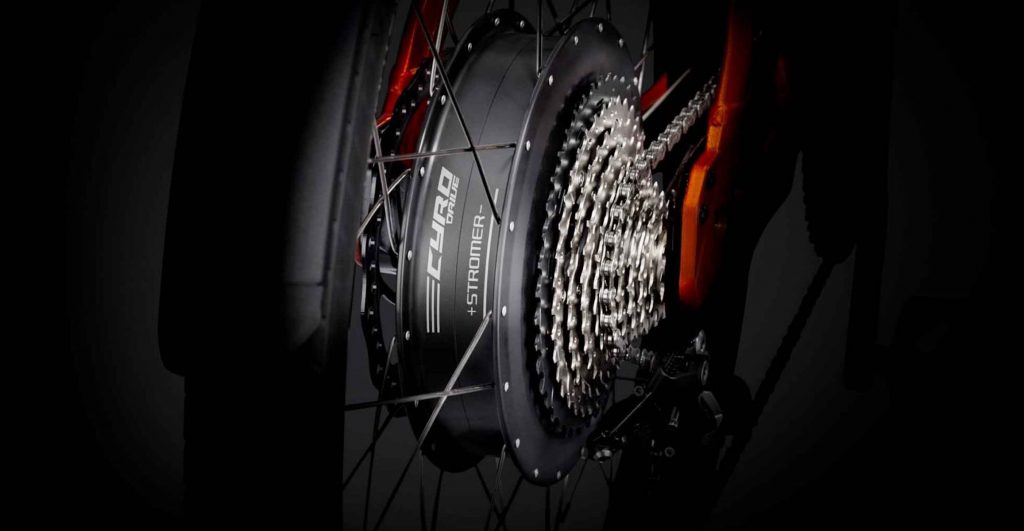
One thing we especially enjoy about hub-drive motors is that they possess a surprising amount of power. While this depends on the wattage/output of your chosen hub motor, they’re quite fast on average, despite not being torque-driven.
Front hub motors also contribute to somewhat of an “all-wheel drive” capability, with the rear wheel driven by pedal power. This is a lifesaver when riding in snow, mud, sand, or any other tricky terrain.
Another key benefit is that no chain is required to operate a hub-drive eBike, as they rely purely on the throttle and motor instead, with power going directly to the wheels. Actually, this is the primary reason why we recommend using a hub-drive electric bike (if you take electric biking halfway-seriously!). However, nothing is without fault, so let’s cover some of the cons behind mid-drive hub motors, starting with their weight.
Pros:
- Easy to retrofit
- Highly accessible
- Lots of variations
- No chain is required
- Great average power
- All-wheel drive capacity
- Many affordable options
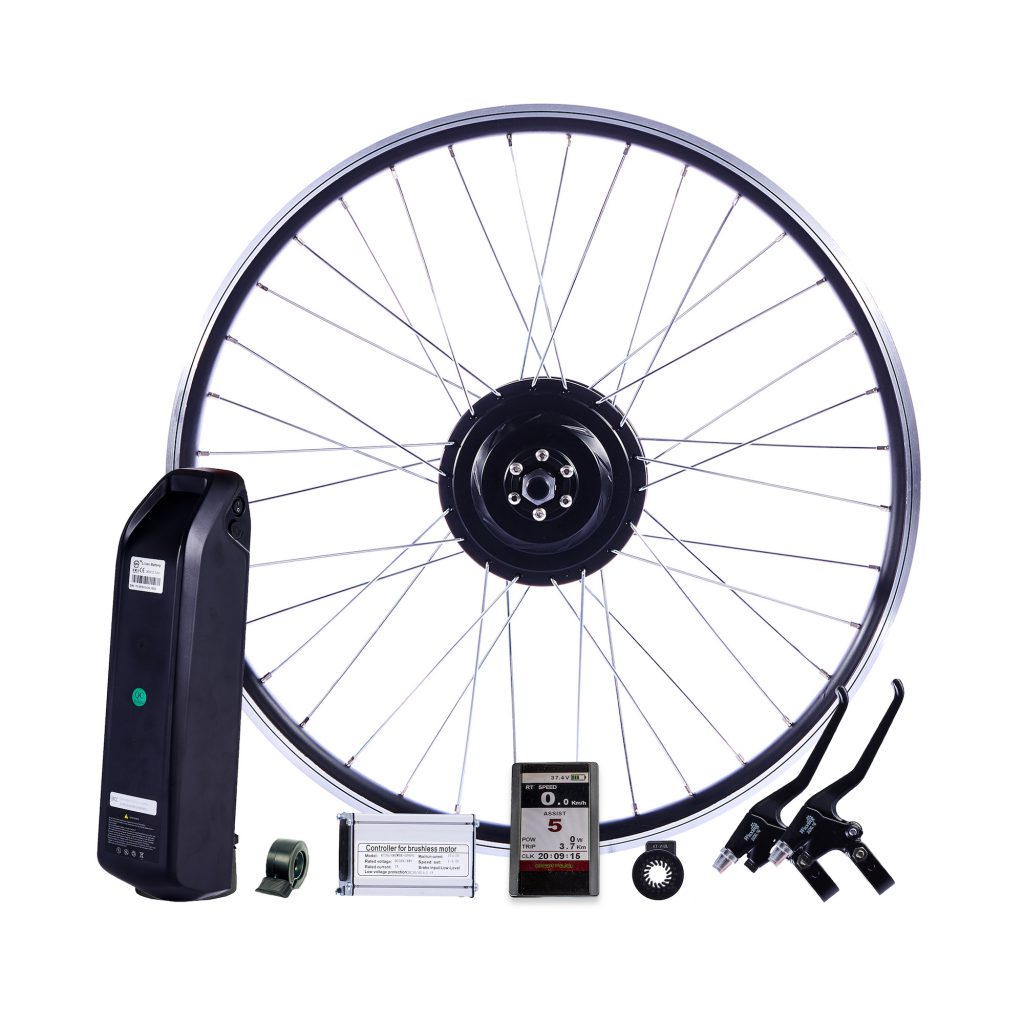
Hub-Drive eBike Cons
Once on, some hub-drive motor models prove quite difficult to remove. While not an overly complicated process, it can prove too much for some and really becomes a bore if you frequently change tires.
That’s not the end of it, either; putting a hub-drive motor on either the front or back wheel also comes with significantly extra weight, potentially affecting the bike’s front-to-back balance. This is minor when on the road, but it makes quite a notable difference when riding off-road or on outdoor trails. If you intend on riding off-road, we recommend looking into some of the mid-drive motor models discussed below.
Cons:
- Adds extra weight
- Difficult to remove
- Potentially impacts balance
- Additional wear on brake pads
- Adds strain when riding off-road
- Average models lack significant torque
- Many model variants to pick, confusing for some
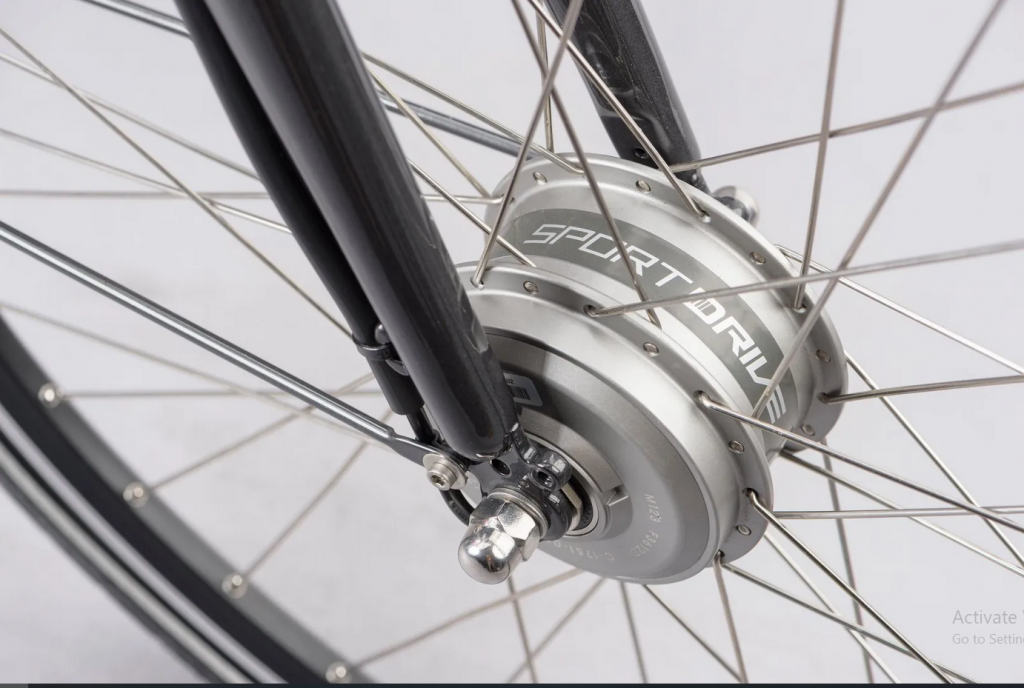
Mid-Drive eBike Pros
Mid-drive motors remain one of the newer additions to the electric bike market. Before their explosion in popularity around 2016, a professionally made mid-drive eBike was especially difficult to find. These days, many companies have expanded to accommodate this demand, including Bosch, Yamaha, Shimano, and many other top brands.
Hub motors are great, but they just don’t meet the same level of technological innovation. We feel that mid-drive is the type to choose if you want the latest and greatest drive motors. Individual preference obviously plays a factor, but personally, I much prefer the natural biking movement of a mid-drive motor, as opposed to the twist throttle commonly seen on hub-drive motor models, which make me feel like I’m riding a scooter or moped.

Pros:
- More efficient
- Better balanced
- Greater torque output
- Natural pedaling motion
- Operates in synergy with gears
- Numerous top brands in the market
- Good for off-roading and downhill riding
- Most modern/technologically advanced
Perhaps the top pro of a mid-drive motor would have to be that it works within the bike’s normal drive train, processing all the benefits of whatever gear the rider selects. This, in turn, maximizes efficiency and extends total mileage. For this reason, combined with the more efficient operating RPM they offer, Bosch eBike models only use mid-drive motors.
Electric bikes with mid-drive motors often have the most responsive behavior, especially concerning pedal assistance. They also deliver a higher peak assistance/output than hub-drive counterparts on average, making a great option for electric mountain bikers and off-roaders. However, mid-drive motors aren’t without fault, so let’s cover a couple of the cons next.
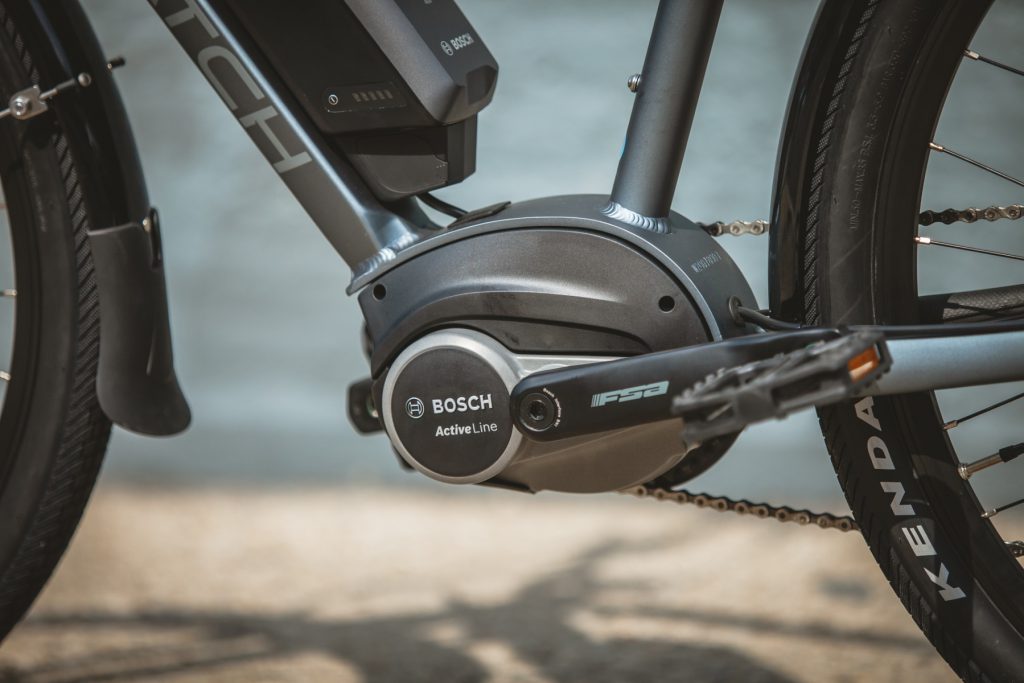
Mid-Drive eBike Cons
Firstly, because their location is right inside the eBike model, these motors usually need to have a bicycle frame designed around them. This is the opposite of hub-drive motors, which are often designed to fit a variety of bike frames and wheels.
Because of this inconvenient production method, mid-drive eBikes commonly possess a higher price tag than competing products. However, in recent years, we’ve seen many models from various brands sharing similar designs, so this likely won’t be a major issue for long.
The main problem mid-drive eBikes face is stress on the chain, accelerated by off-roading, mountain biking and any other demanding riding. When mountain biking up a steep hill, riders usually stand on the pedal, putting increased pressure on the front cog and, consequently, the chain. Normally, that’s nothing to worry about; it’s what bikes are designed to handle. However, things can start to go downhill instead of up when a motor is added to the mix.
The added pressure combined with the stress on the front cog from motor torque has caused chains to snap on these models in the past. Despite this, several newer designs have come out, including one model from Haibike; these incorporate a cog on top of the frame to distribute pressure or stress over a larger area. So we don’t anticipate this being much of an issue in the future either.
